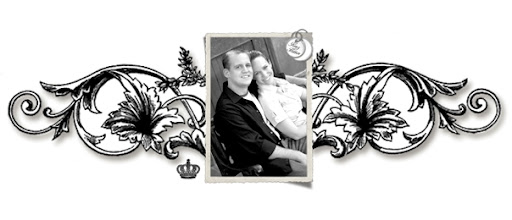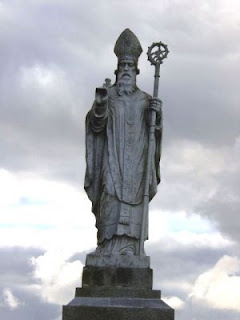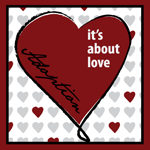'If we ever forget that we're one nation under God, then we will be a nation gone under.' - Ronald Reagan
Monday, March 22, 2010
Wednesday, March 17, 2010
HAPPY ST PATRICKS DAY!!!
On the last day of this countdown I thought a little history about the day and currant traditions would be fitting
In the past, Saint Patrick's Day was celebrated as a religious holiday. It became a public holiday in 1903. The first St. Patrick's Day parade held was held in Dublin in 1931. Although secular celebrations now exist, the holiday remains a religious observance in Ireland, for both the Church of Ireland and Roman Catholic Church.
It was only in the mid-1990s that the Irish government began a campaign to use Saint Patrick's Day to showcase Ireland and its culture. The government set up a group called St. Patrick's Festival.
The first Saint Patrick's Festival was held on 17 March 1996. In 1997, it became a three-day event, and by 2000 it was a four-day event. By 2006, the festival was extended to a five day event.
However in recent years Christian leaders in Ireland have expressed concern about the secularization of St Patrick's Day. March 2007 in The Word magazine's, Fr. Vincent Twomey stated that, "it is time to reclaim St Patrick's Day as a church festival". He questioned the need for "mindless alcohol-fuelled revelry" and concluded that, "it is time to bring the piety and the fun together".
"Wearing of green"
Green ribbons and shamrocks were worn in celebration of St Patrick's Day as early as the 17th century. It is said that St. Patrick used the shamrock to explain the Holy Trinity to the pre-Christian Irish, and the wearing and display of shamrocks and shamrock-inspired designs have become a ubiquitous feature of the day. The phrase "the wearing of the green" (a popular Irish folk song), means to wear a shamrock on one's clothing
In the US of A
Irish Society of Boston organized what was the first Saint Patrick's Day Parade in the colonies on March 17, 1737. The first celebration of Saint Patrick's Day in New York City was held at the Crown and Thistle Tavern in 1766, the parades were held as political and social statements because the Irish immigrants were being treated unfairly. New York's first Saint Patrick's Day Parade was held on March 17, 1762 by Irish soldiers in the British Army. In 1780, General George Washington, who commanded soldiers of Irish descent in the Continental Army, allowed his troops a holiday on March 17, 1780 as an act of solidarity with the Irish in their fight for independence." This event became known as The St. Patrick's Day Encampment of 1780.
TODAY
In the Northeastern United States, peas are traditionally planted on Saint Patrick's Day. Random? Yes. Interesting? Definatly.
Seattle and other cities paint the traffic stripe of their parade routes green. Chicago dyes its river green and has done so since 1961 when sewer workers used green dye to check for sewer discharges and got the idea to turn the river green for St. Patrick's Day (the dye only lasts a few hours). Indianapolis also dyes its main canal green. Savannah dyes its downtown city fountains green. Missouri University of Science and Technology - St Pat's Board Alumni paint 12 city blocks kelly green with mops before the annual parade. In Jamestown, New York, the Chadakoin River (a small tributary that connects Conewango Creek with its source at Chautauqua Lake) is dyed green each year.
Even the Capital gets involved on St. Patrick’s Day. Last year was the first year to dye the fountain green
Chicago dyes its river green and has done so since 1961 when sewer workers used green dye to check for sewer discharges and got the idea to turn the river green for St. Patrick's Day
(the dye only lasts a few hours).
The Chicago River in Chicago, Illinois on Saint Patrick's Day.
In Savannah, Georgia a parade travels through Savannah's Historic District. One tradition that has developed has been the official "dyeing of the fountains" which happens several days before the parade.
In Hot Springs, Arkansas, perhaps the smallest notable parade is the World's Shortest St. Patrick's Day Parade. St. Patrick’s day parade is held annually on historic Bridge Street which became famous in the 1940s when Ripley’s Believe It or Not designated it “The Shortest Street in the World.”
Indianapolis dyes their river green too
In Syracuse, New York celebrations begin with the delivery of green beer to Coleman's Irish Pub on the first Sunday of March. Coleman's is located in the Tipperary Hill section of the city. Tipperary Hill is home to the World famous "Green-on-Top" Traffic Light and is historically the Irish section in Syracuse. Saint Patrick's Day is rung in at midnight with the painting of a Shamrock under the Green-Over-Red traffic light. Syracuse has the largest St. Patrick's Day celebration per-capita in the United States. Their annual parade typically draws in an estimated crowd of more than 100,000 visitors to downtown Syracuse, as well as 5,000 to 6,000 marchers.
The New York City parade has become the largest Saint Patrick's Day parade in the world. In a typical year, 150,000 marchers with a couple of million spectators.
In Boston Massachusetts they dye the river green as well
Holyoke, Massachusetts was the site of massive Irish immigration in the 19th Century, and hosts a Parade its organizers claim is the second largest in the United States. It is heald on the Sunday following St. Patrick's Day each year. Attendance exceeds 300,000, with over 25,000 marchers, through a 2.3 mile route in this city of 40,000.
Even Rexburg Idaho is trying to instate an annual river dying
In Venice Italy they the canals seem a little greener on St. Patricks Day!
As you can see Saint Patrick's Day is widely celebrated in America by Irish and non-Irish alike. Many people, regardless of ethnic background, wear green-colored clothing and items. Traditionally, those who are caught not wearing green are pinched, usually affectionately.
Today, St. Patrick’s Day is celebrated around the world! Get into the green sprit!
Monday, March 15, 2010
(Celtic)Step Dance
I miss Irish dancing terribly. I have stepped it out for a lot of years. I miss teaching it as well. This will be the first year where I haven’t performed on St. Patricks day for at least 5 years.
So in honor of the Step here are a few facts
Irish dance is a traditional dance form originating in Ireland. Irish dance can be divided into social dance and performance dances. While Irish social dances can be divided further into céilí (said kay-lee) and set dancing. Irish set dances which are danced by 4 couples arranged in a square, while céilí dances are danced by varied formations of couples of 2 to 16 people. In addition to their formation, there are significant stylistic differences between these two forms of social dance. Irish social dance is a living tradition and variations in particular dances are found across the Irish dance community.
Irish performance dancing is traditionally referred to as stepdance. Irish stepdance, popularized the show "Riverdance," known for its rapid leg movements with the body and arms being kept largely stationary. The solo stepdance is generally characterized by a controlled but not rigid upper body, straight arms, and quick, precise movements of the feet. The solo dances can either be in "soft shoe" or hard shoe".
Soft shoe dances include the reel, slip jig, light jig and single jig . Reels have a 4/4 (or sometimes 2/4 or 2/2) time signature. Slip jigs are in 9/8 time. Light and single jigs are in 6/8 time, with different emphasis within the measure distinguishing the music. Hard shoe dances include the hornpipe in 2/4 time, the hard jig (also called the treble jig) in a slow 6/8, the treble reel and traditional sets, which are a group of 36 dances with set music and steps. Many traditional sets have irregular musical phrasing. There are also more advanced "non-traditional sets" done by advanced dancers. These have set music, but not steps.
The dancing traditions of Ireland probably grew with Irish traditional music. Originating in Pre-Christian Ireland, Irish dance was later influenced by dance forms from the Continent, especially the Quadrille.
As Irish people emigrate all over the world, they took their cultural traditions with them. Many people think that Sean-nós dancing have influenced various other forms of traditional solo dance, especially those found in areas with strong Irish communities. Historically, it is likely that sean-nós dance influenced the development of many American and Canadian traditional percussive dance forms, such as buck dancing, flatfooting, clogging, and tap dancing.
Irish social, or céilí (pronounced kay-lee) dances vary widely throughout Ireland and the rest of the world. A céilí is a social gathering featuring Irish music and dance. Céilí dancing is a specific type of Irish dance. A céilí dance may be performed with as few as two people and as many as sixteen. Céilí dances may also be danced with an unlimited number of couples in a long line or proceeding around in a circle. Céilí dances are often fast and complex. In a social setting, a céilí dance may be "called" -- that is, the upcoming steps are announced during the dance for the benefit of newcomers. Sound familiar?
There are two types of shoes. The first is the soft shoe, otherwise known as ghillies (pronounced gill-ee), and Hard shoes for the heavy dances, such as horn pipe---- The hard shoe is similar to tap shoes, except that the tips and heels are made of fiberglass, instead of metal. The soft shoes, which are called ghillies, resembles a ballet shoe except there is no hard toe box, the ribbons are exchanged for laces, and the pink for black. Gillies are only worn by girls, while boys wear a black leather shoe called a reel shoe, which resembles a black jazz shoe with a hard heel. Boy's soft-shoe dancing features audible heel clicks.
Below is ballet vs. Irish
Guess Whos legs?
Several generations ago, the appropriate dress for a competition was simply your "Sunday Best”. In the 1970s and 1980s, ornately embroidered dresses became popular. Today even more ornamentation is used on girls' dresses, including lace, sequins, silk, extensive embroidery, feathers, faux fur and more. Irish Dancing schools have school dresses, which are worn by "Beginner" through "Novice" dancers. When dancers reach a level decided by their school, may get a solo dress of their own design and colors. Solo dresses can range from 500 to 3000 dollars. Today most women and girls curl their hair or wear a wig for a competition or feis (pronounced fesh), because traditionally in Ireland girls had nicely curled ringlets. Today most men wear a shirt, vest, and tie assigned by their school paired with black trousers or a kilt. But when they get into the higher levels, as the girls do, they get to pick their own vest, shirt and tie.
Thursday, March 11, 2010
THE MAN BEHIND THE DAY
I love St. Paddy’s Day! And in the spirit of green I thought I would count down with some fun
St. P’s Day facts.
First off
THE MAN BEHIND THE DAY
Saint Patrick's Day is an annual feast day that celebrates Saint Patrick himself. St. Pat is the patron saint and national apostle of Ireland.
St. Patrick was born in Britain to wealthy parents circa 380 a.d. He is believed to have died on March 17, around 460 A.D..
When Patrick was sixteen he was taken prisoner by a group of Irish raiders who attacked his family's estate. They took him to Ireland where he spent six years in captivity. During this time, he worked as a shepherd, outdoors and away from people. Lonely and afraid, he turned to his religion for solace. It is also believed that Patrick first began to dream of converting the Irish people to Christianity during his captivity.
After more six long years as a prisoner, Patrick escaped. According to his writing, a voice-which he believed to be God's-spoke to him in a dream, telling him it was time to leave Ireland.
To do so, Patrick walked nearly 200 miles to the Irish coast. After escaping to Britain, Patrick reported that he experienced a second revelation, an angel in a dream told him to return to Ireland as a missionary.
Patrick began religious training which lasted more than fifteen years. After his ordination as a priest, he was sent to Ireland with a dual mission-to minister to Christians already living in Ireland and to begin converting the Irish. (Interestingly, this mission contradicts the widely held notion that Patrick introduced Christianity to Ireland.)
Familiar with the Irish language and culture, Patrick chose to incorporate traditional ritual into his lessons of Christianity instead of attempting to eradicate native Irish beliefs. For instance, he used bonfires to celebrate Easter since the Irish were used to honoring their gods with fire. He also superimposed a sun, a powerful Irish symbol, onto the Christian cross to create what is now called a Celtic cross, so that veneration of the symbol would seem more natural to the Irish. He also used the shamrock to explain the Holy Trinity.
Saint Patrick is credited with bringing Christianity to Ireland. Most of what is known about him comes from his two works, the Confessio and Epistola. Saint Patrick described himself as a "most humble-minded man, pouring forth a continuous paean of thanks to his Maker for having chosen him as the instrument whereby multitudes who had worshipped idols and unclean things had become the people of God."
Saint Patrick is most known for driving the snakes from Ireland. It is true there are no snakes in Ireland, but there probably never have been - the island was separated from the rest of the continent at the end of the Ice Age. As in many old pagan religions, serpent symbols were common and often worshipped. Driving the snakes from Ireland was probably symbolic of putting an end to that pagan practice. While not the first to bring christianity to Ireland, it is Patrick who is said to have encountered the Druids at Tara and abolished their pagan rites. The story holds that he converted the warrior chiefs and princes, baptizing them and thousands of their subjects in the "Holy Wells" that still bear this name.
There are several accounts of Saint Patrick's death. One says that Patrick died at Saul, Downpatrick, Ireland, on March 17, 460 A.D. His jawbone was preserved in a silver shrine and was often requested in times of childbirth, epileptic fits, and as a preservative against the "evil eye." Another account says that St. Patrick ended his days at Glastonbury, England and was buried there. The Chapel of St. Patrick still exists as part of Glastonbury Abbey. Today, many Catholic places of worship all around the world are named after St. Patrick, including cathedrals in New York and Dublin city
Saint Patrick's Day has come to be associated with everything Irish: anything green and gold, shamrocks and luck. Most importantly, to those who celebrate its intended meaning, St. Patrick's Day is a traditional day for spiritual renewal and offering prayers for missionaries worldwide.
So take advantage of the holiday make it an opportunity for renewal and remember all of those missionaries in your prayers!
Tuesday, March 2, 2010
Craziness with color!
The Dewey Color System® is now the world's most accurate career testing instrument.
This report based on your personality traits indicates your two most enjoyable day-day-day occupation skills. It’s a summary of the full report, the Color Leadership Evaluation 5.0.
“Studies indicate workplace enjoyment is the key to success.
This fun, fast and valid career test uses color preference to determine successful career paths.
Click here to take the color test yourself.
This is what it said about me:
You're a SOCIAL MANAGER
Keywords:Tactful, Cooperative, Generous, Understanding, Insightful, Friendly, and Cheerful
This very social type enjoys working in groups, sharing responsibilities, and being the center of attention. Fields of interest are instructing, helping, nurturing, care giving and instructing-especially young people. They discuss and consider feelings in order to solve problems, lead, direct, persuade, guide, organize and enlighten others.
SOCIAL MANAGER OCCUPATIONS
Suggested careers are Radio and TV Producer, Loan Officer, Elementary or High School Teacher, Public Health Nurse, Dietitian, Community Service or Human Resource Director, High School Counselor, Home Economics Teacher, Parks and Recreation Coordinator, Physical Education Teacher, Student Personnel Worker, Occupational Therapist, Social Worker (that's me!), Speech Pathologist, Social Science Teacher, Nurse, LPN, Agricultural Extension Agent, Physical Therapist, Social Worker, Minister and Department Store Manager.
SOCIAL MANAGER WORKPLACES
You are sincerely concerned for the welfare of others. Your kind, humanistic nature allows you to help those who can't help themselves. Others see you as idealistic, ethical, and responsible.
Suggested Social Manager workplaces are human resource departments, social service agencies (again that's me!), schools, religious organizations, medical service companies, mental and health care facilities.
2nd Best Occupational Category
You're an ORGANIZER
Keywords:
Self-Control, Practical, Self-Contained, Orderly, Systematic, Precise, and Accurate
These conservative appearing, plotting-types enjoy organizing, data systems, accounting, detail, and accuracy. They often enjoy mathematics and data management activities such as accounting and investment management. Persistence and patience allows them to do detailed paperwork, operate office machines, write business reports, and make charts and graphs.
Crazy!!!
Especially considering that both of my “duties” at work are First Social Worker and Second Secretary.
Subscribe to:
Posts (Atom)














